Two
COMMERCE AND
TRANSPORTATION
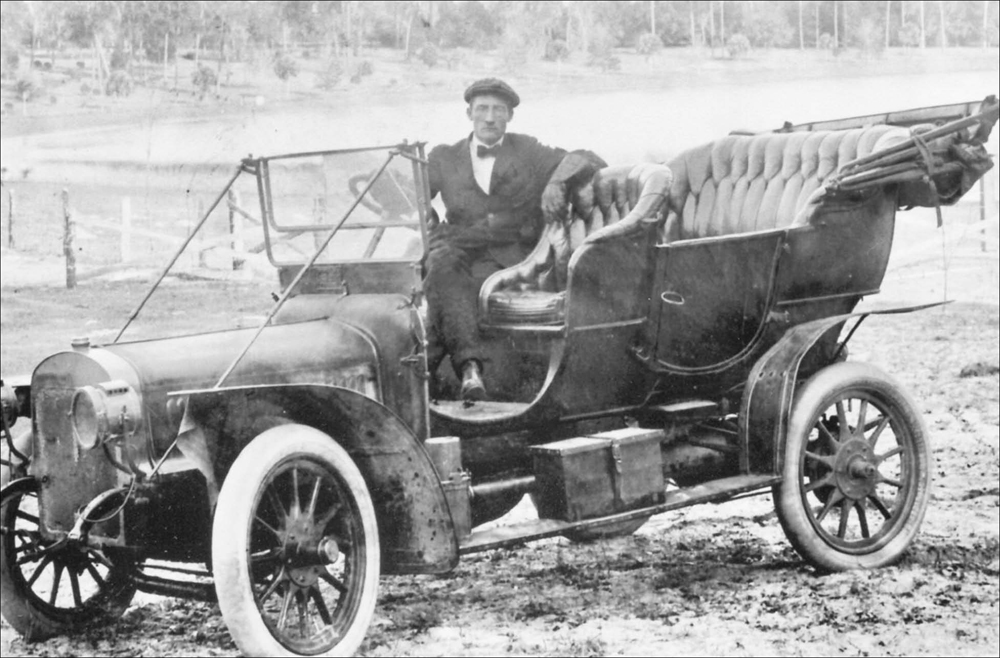
Reasley W. Vincent Sr. shows off the Vincent family car in this c. 1920 picture. At the time, there were only two cars in Zellwood. Vincent sold J.R. Watkins products throughout Zellwood and the surrounding area from the backseat of the car. The family—especially the youngsters!—enjoyed the entertaining outings he provided in his automobile. (Courtesy of the Vincent family.)

The Zellwood Inn sign along Orange Blossom Trail pointed guests to the inn at the southeast corner of Washington and Church Streets. Fried chicken, biscuits, and stewed apples attracted diners to Elizabeth Letsinger’s table. She and her husband, Elijah, had arrived from Tennessee by train in 1910. The original Zellwood Inn (above) was completed in 1911, but it burned down in 1923; Tom Morton built a new inn (below) in 1925. After Elizabeth’s death in 1946, the inn briefly closed. Robert Edward Letsinger, Elizabeth’s grandson, along with his mother (Helen), his wife (Ruth), and staff, soon again opened it. In its heyday, the Zellwood Inn served many guests. The 1940s brought men who had come to farm on Zellwood’s muck land and boarded at the inn. In the late 20th century, the inn became a private home. (Both, courtesy of the Letsinger family.)
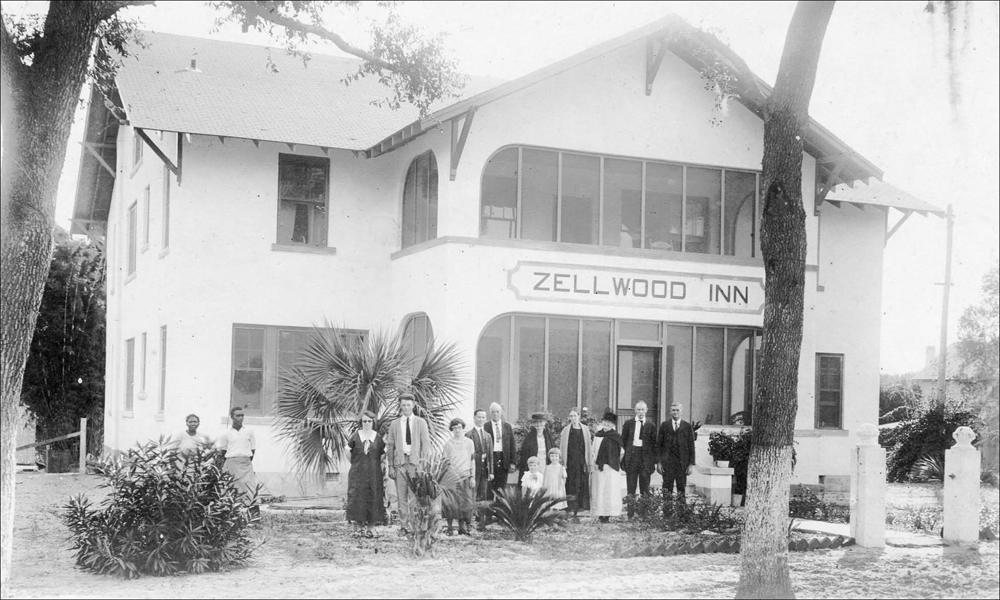
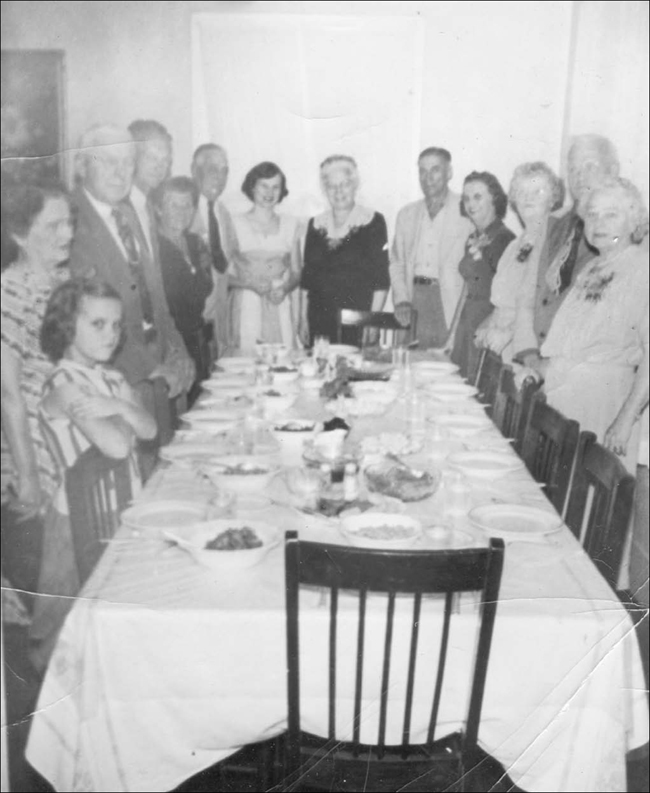
Elizabeth Letsinger operated the Zellwood Inn until she was 78 years old, offering as many as 18 varieties of food served family style. She took the train to Leesburg for provisions and raised vegetables in her own garden. Wild cows and snakes plagued her as she made her way to the train depot or tended her garden. The inn’s guests included Richard Whitney, who was experimenting with growing ramie on the muck land. (Ramie was a hemp-like plant which, upon processing, would yield a durable fabric.) Albert T. Hartcorn stayed at the inn while his Holly Arms hotel was being built. Elizabeth’s daughter-in-law Helen Letsinger (center) welcomed guests to the table at the Zellwood Inn. (Courtesy of the Letsinger family.)
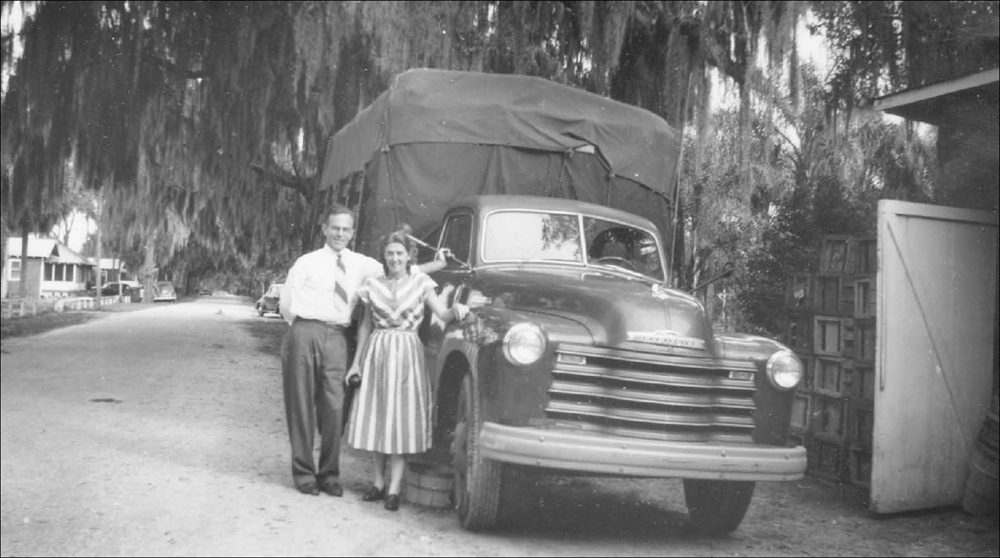
Robert “Bob” Letsinger ran a produce business on the Zellwood Inn property. Here, he and his wife, Ruth, stand by their red two-ton Chevrolet on King Street. Letsinger Produce brought fresh fruits and vegetables directly to the inn and also traveled throughout Florida to deliver produce grown by Zellwood farmers, including those with the last names Clonts, Duda, Lust, Long, Grinnell, Gerwig, Stewart, and Jorgensen. (Courtesy of Robert Earl Letsinger.)
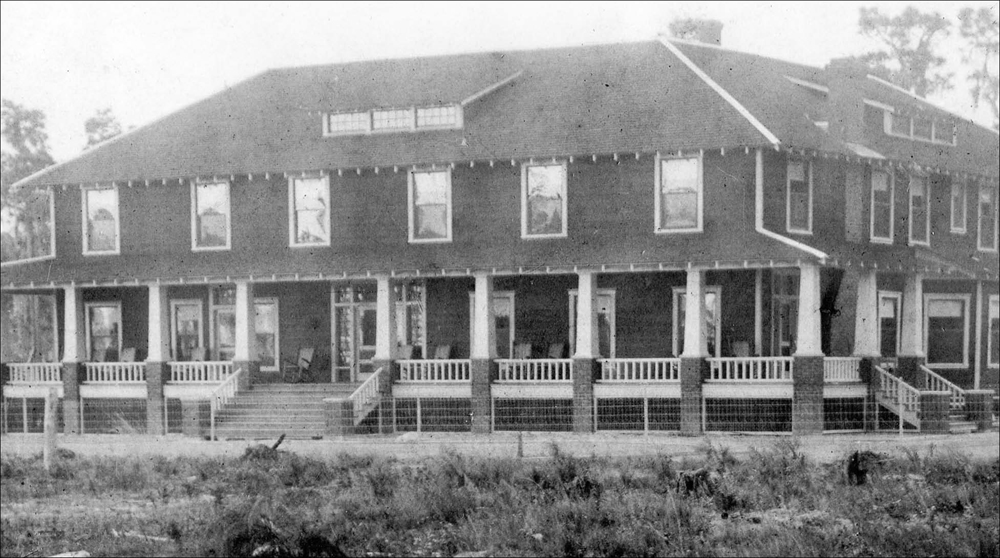
The Holly Arms, owned by Albert T. Hartcorn, was built around 1915 at the northwest corner of Jones Avenue and Laughlin Road. The 1916 Official Hotel Red Book and Directory listed its rooms as costing $2 per night. The lobby contained a telegraph and money-order office. Richard Whitney bought the hotel to use as a hunting lodge and built a 50-by-20-foot concrete swimming pool. The Regina music box in the lobby was quite an attraction; a patron would select a metal disk, wind the handle, and hear beautiful music (mostly waltzes). Franklyn and Geraldine Gaede lived at the hotel while establishing Ohio Farmers, a business co-owned by Franklyn and Andy Couch, who grew radishes in Zellwood and also had a farm in Ohio. Michael Ondich Jr. owned the Holly Arms from 1946 until 1972, when he sold it to Zellwin Farms. The hotel burned down in the mid-1980s. (Above, courtesy of Adelbert Raulerson; below, courtesy of Rosa Lee Ondich.)
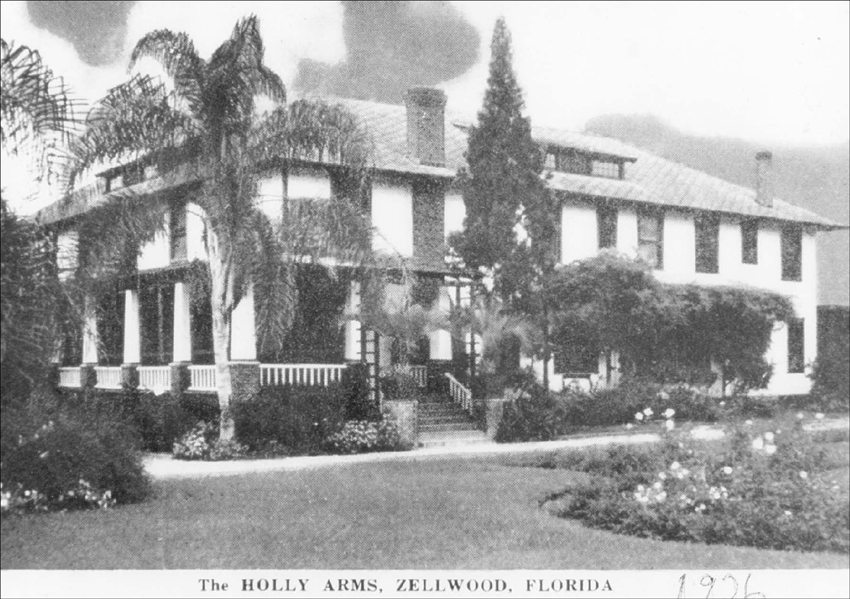
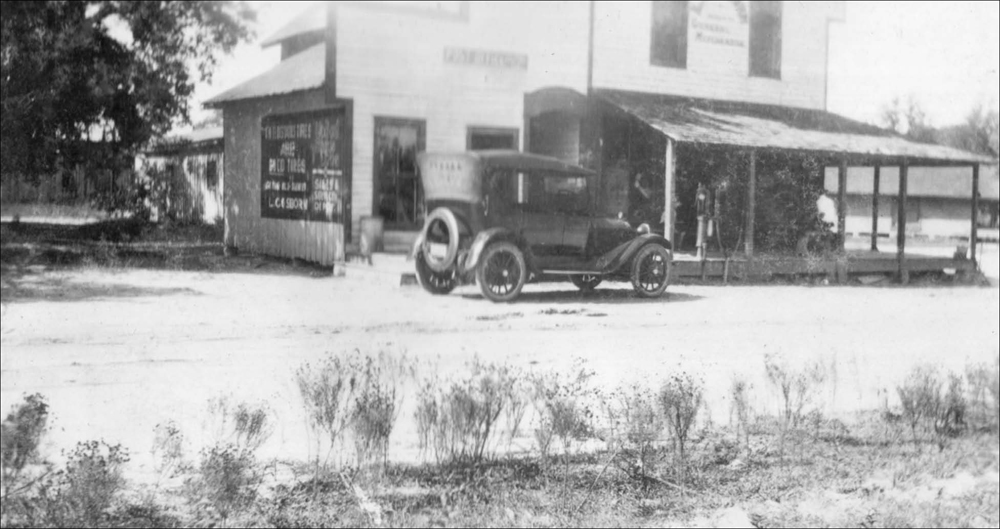
The building that housed Osborn General Merchandise, the post office, the Masonic lodge, and the library became the hub of social activity. Fancy balls and dances held upstairs attracted people traveling by train from as far away as Orlando. Bands—complete with harps—also arrived by train. These events were long-gloved affairs. James Leroy Giles, a clerk employed by Lewis Osborn at Osborn General Merchandise, went on to be elected mayor of Orlando three times. The upstairs of the general store was converted into apartments in the 1940s, providing housing for families, including the Brantleys, Tuckers, and Browns. After the Masonic Order joined the Apopka Lodge, Lewis Osborn and L.F. Stewart would ride together to the meetings in Stewart’s Maxwell car or Osborn’s ancient Cadillac. (JFB.)
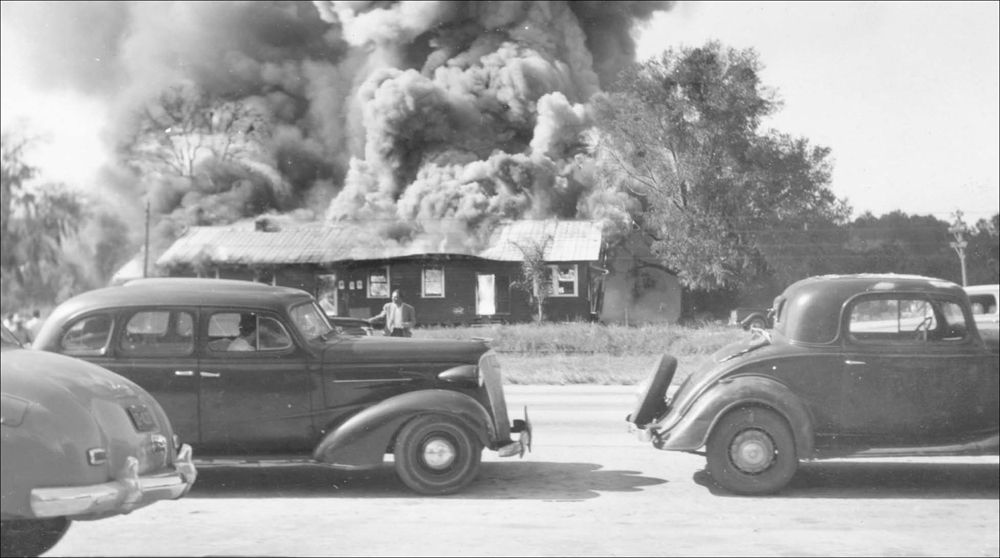
Around 1947, the Bee Hive apartment house on the south side of Highway 441 caught fire when something on a stove ignited. The building, owned by E.W. Fly, had been moved from an Army base. It was called the Bee Hive because the active children who lived there seemed as busy as bees. Allen and Sally Sewell, Dot and Jim Goodman, and the Ryals and Browning families were among those who once lived at the Bee Hive. (CG.)
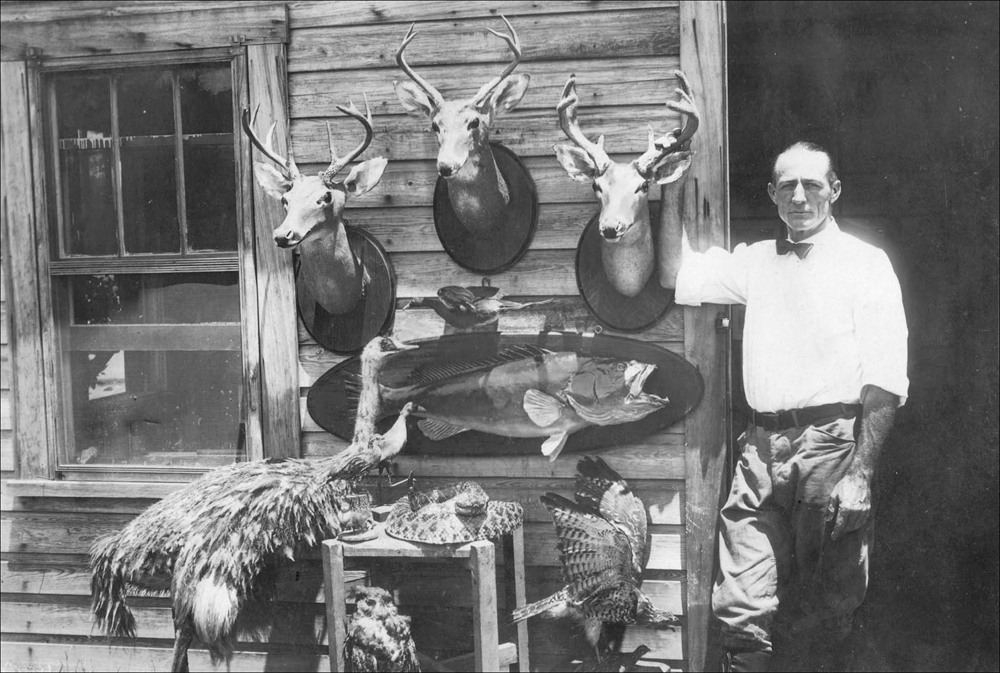
Lester Brittian Vincent poses with examples of his outstanding taxidermy. He was locally known for his talent for realistically preserving wildlife in the workshop behind his flower shop. Hunters brought their trophies to Vincent to be preserved. His considerable artistic talents were showcased in both his taxidermy and his flower business. (Courtesy of Becky Vincent Juvinall.)
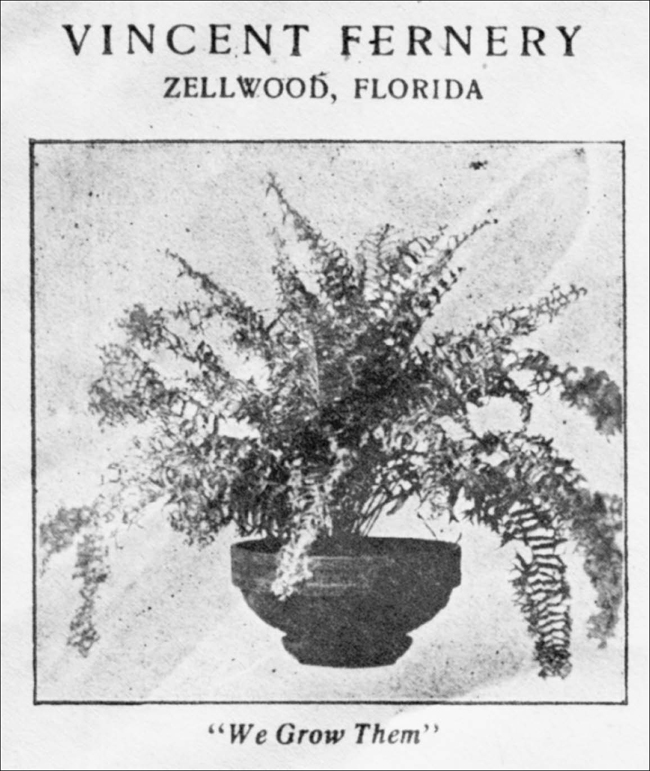
In the early 1920s, the Vincent brothers—Reasley, Lester, Jim, and George—established their fernery business, becoming part of the Zellwood Fern Growers Association. This group shipped its first ferns—approximately 285,000 of them—in the spring of 1923. The company’s logo and motto were printed in color on Vincent Fernery envelopes between 1912 and 1923. Lester went on to establish his own business, Lester B. Vincent & Son Florist, in the early 1930s. (CVT.)
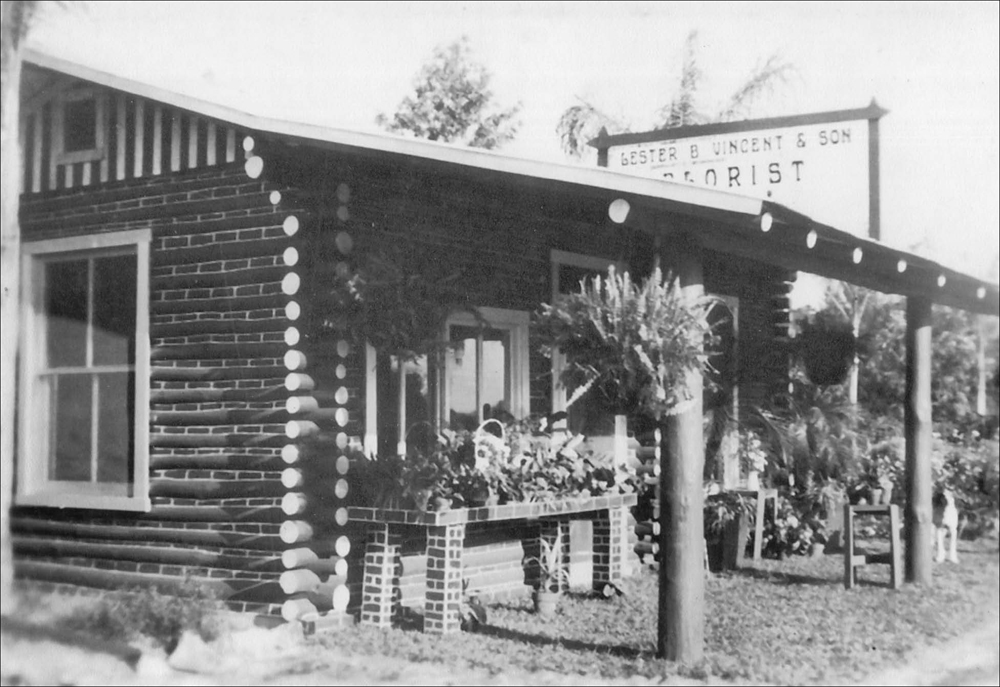
Lester B. Vincent & Son Florist (above) was a significant part of the Zellwood business community for more than eight decades, with most family members working there at some point. The flower shop was instrumental in planning and implementing community projects, especially the Central Florida Fair exhibits, which won many awards. Lester started his nursery in 1922, raising ferns and flowers. In 1939, he began a wholesale retail flower business. After Highway 441 was widened in 1958, the company opened a third building (below). In 1978, the Lester B. Vincent family purchased Apopka Florist, which is now operated by Bill Vincent, a third-generation member of the family. The family sold the Zellwood property in 1989; as of 2014, it housed the La Chaquita Mexican store. (Both, courtesy of Becky Vincent Juvinall.)
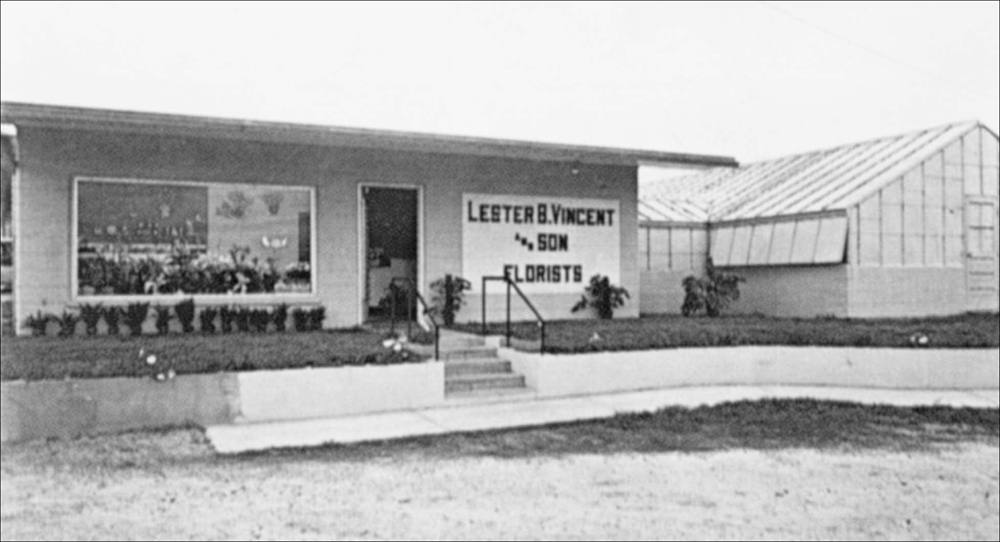
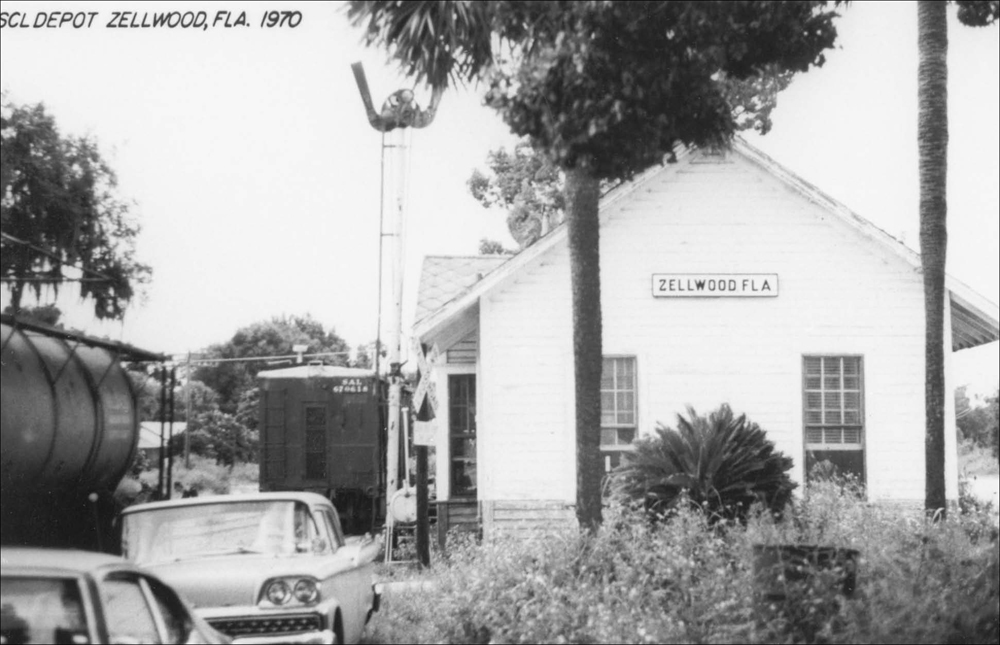
The Zellwood Railroad Depot was located on the southwest corner of Jones Avenue and Highway 441. Leonard F. Stewart Sr. came to Zellwood as stationmaster for the Tavares, Orlando & Atlantic Railroad and served for 42 years. He joined a community bustling with activity. Stewart recalled hundreds of carloads of slate and tile being received to build the Sydonie mansion. A warranty deed from May 1885 (before the construction of Highway 441) shows that land was purchased by the Tavares, Orlando & Atlantic for a passenger depot where the old depot once stood and for a freight depot on the land where the Zellwood Fruit Distributors’ packinghouse was located.
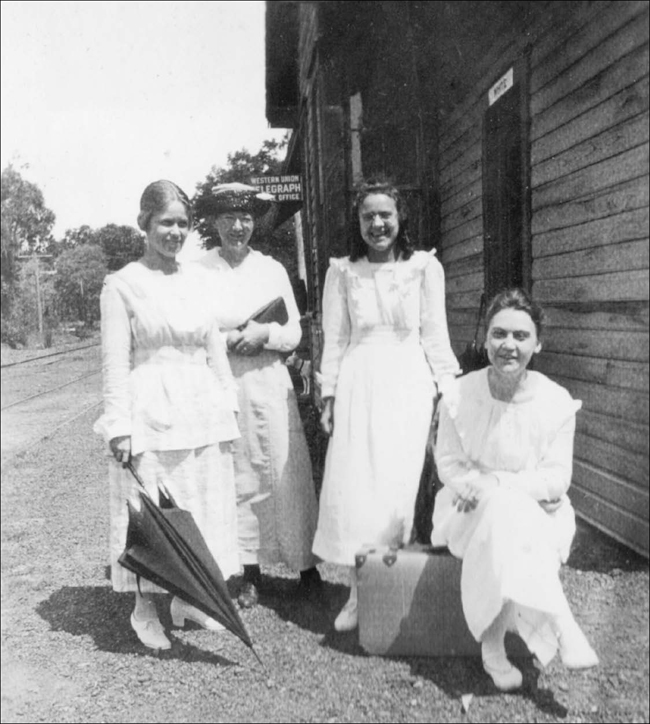
A group of unidentified friends went to the depot to bid adieu to young Estelle King (seated), who left Zellwood to attend Wesleyan College in Macon, Georgia. (JFB.)
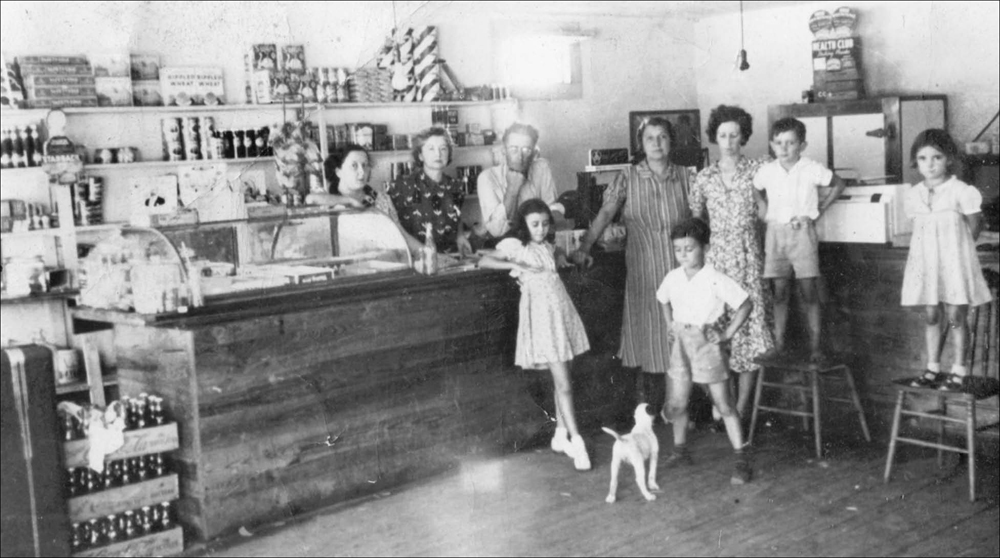
The folks seen here in McHaffie’s Grocery are, from left to right, Grace McHaffie, Fern Winn, Cal McHaffie (Grace’s husband), Julia Fern Haynes, an unidentified woman, J.B. Haynes, Hazel Haynes, Elwood McHaffie, and Betty Ann Haynes. Buses brought fruit pickers to this store, where workers spent their pay. Cal passed away in 1968, leaving Grace to manage their orange groves and McHaffie’s Grocery. (Courtesy of Jill Maltby Horton.)
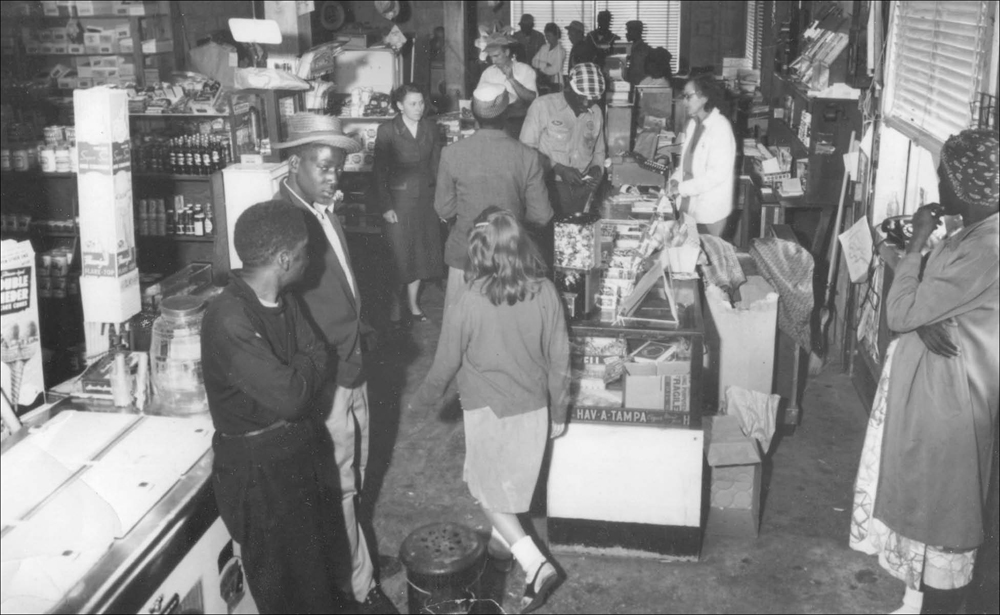
Mae Borders (in white sweater) owned Borders Mercantile, north of Zellwood. Her daughter Sarah Tozia (in dark dress) and granddaughter Carol (in foreground, wearing skirt and socks) are also pictured. Borders purchased the mercantile in 1945 and demolished and rebuilt it in 1955, when Orange Blossom Trail was a four-lane road. Borders obtained laborers for other farmers and employed workers for her own farm. Del Monte contracted with Borders to grow Blue Lake beans. (Courtesy of Carol Adkins.)
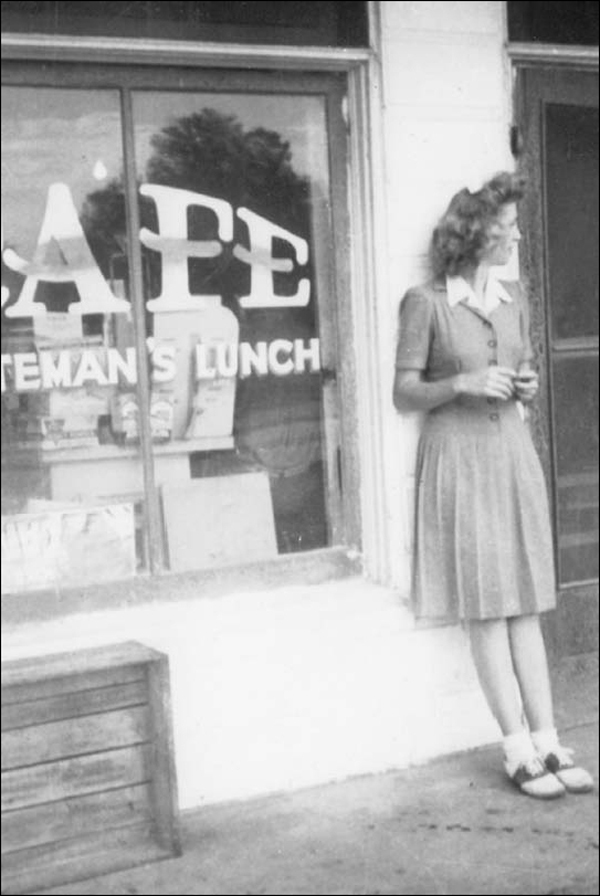
Bateman’s Cafe and General Store was located on Highway 441. There, one could board the Greyhound bus for all points north or south. For 50¢, one could ride all the way to Orlando to shop for clothing and shoes; the route was especially popular during the Christmas holidays. Teenagers without transportation could make a day of shopping and eating lunch at Morrison’s Cafeteria. In the image below, Truma and Cliff Bateman pose in front of their business, Bateman’s Café and General Store, with a group of unidentified children. Inell Miller recalls that the Batemans were wonderful people and were like parents to her when she rented from them. (Left, courtesy of Jill Maltby Horton; below, courtesy of Betty Smith Allen.)
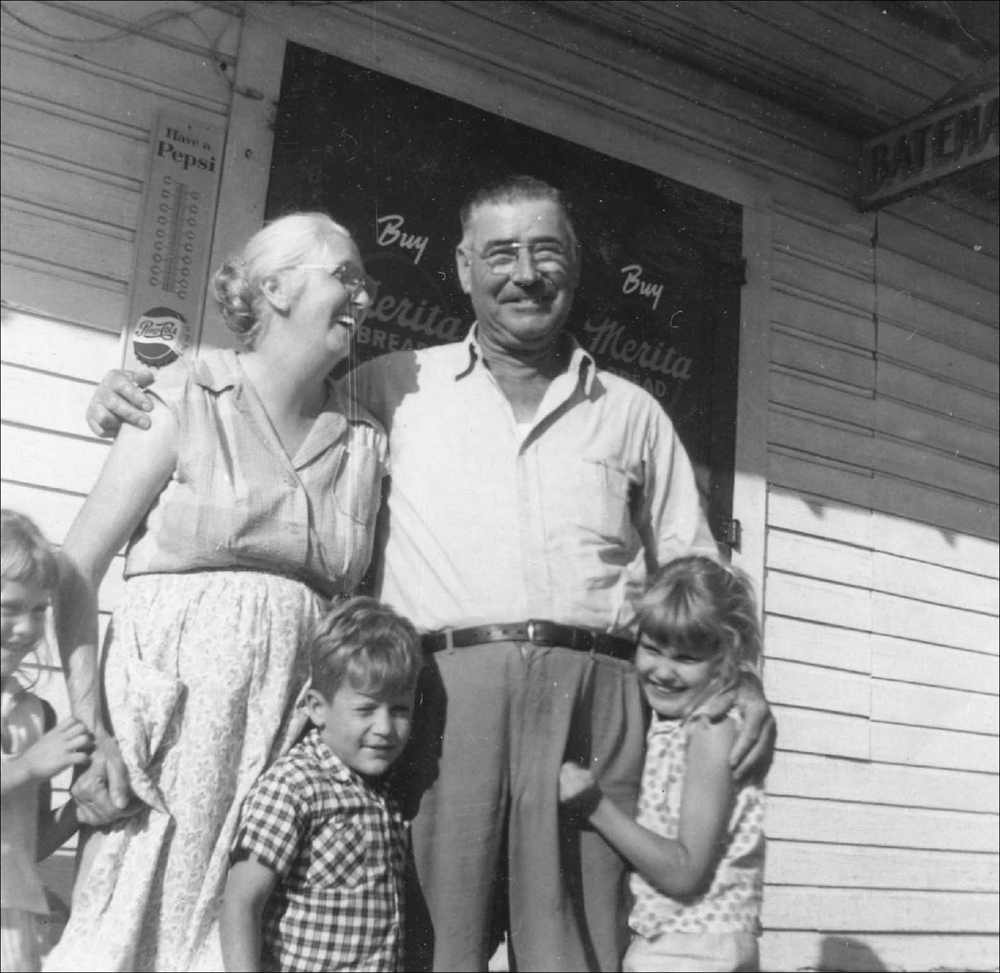
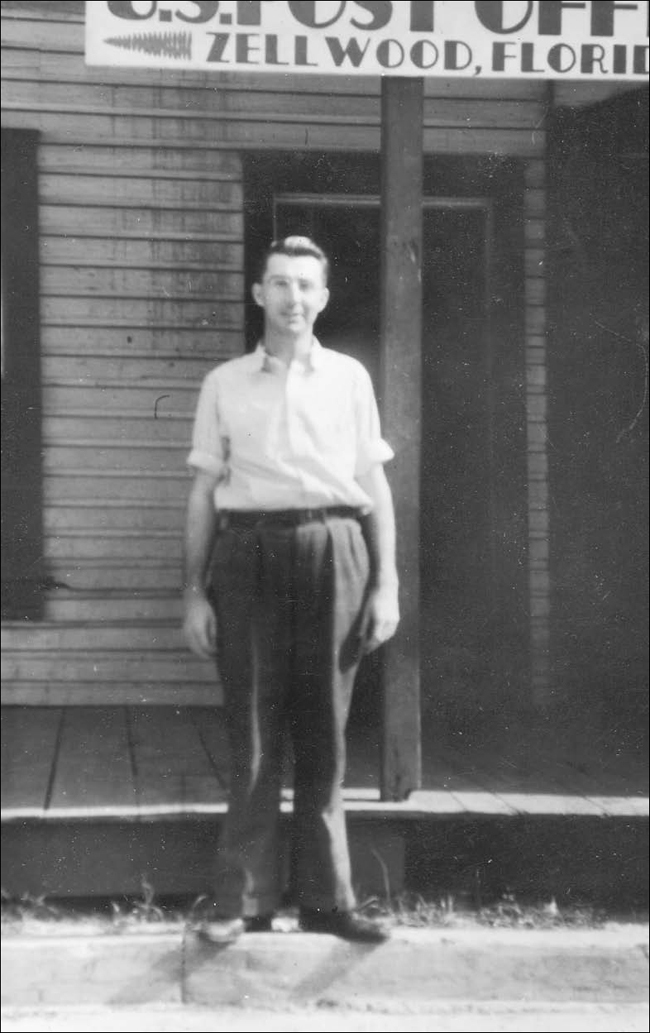
Leonard F. Stewart Jr. (pictured at right) was born in Zellwood and served as postmaster from June 30, 1935, until January 1978. He cared about people and would often deliver important mail and packages to residents’ homes, even on holidays. At 11:00 each evening, a huge bus called the “Mule Train” stopped behind the post office to deliver and pick up the mail. “Lenny,” as he preferred to be called, also owned Stewart’s Sundries drugstore and grew citrus. He was a veteran of World War II. (WL.)
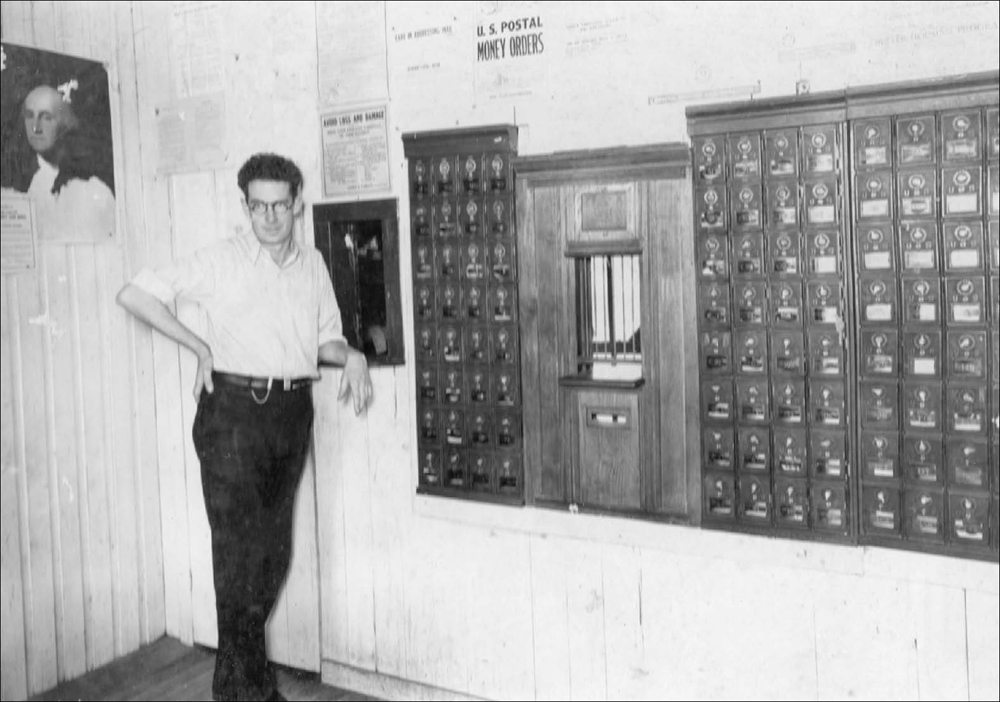
Wallace Byron Osborn (pictured below) was appointed acting postmaster on August 4, 1928, following the death of his father, Lewis C. Osborn, who had served in the position since 1911. Wallace was later designated postmaster and served until 1935. At the time, the post office was a lean-to outside of Osborn General Merchandise on the east side of the intersection of Magnolia Street and Jones Avenue. A train left mail on an elevated hook on the railroad tracks beside the depot.
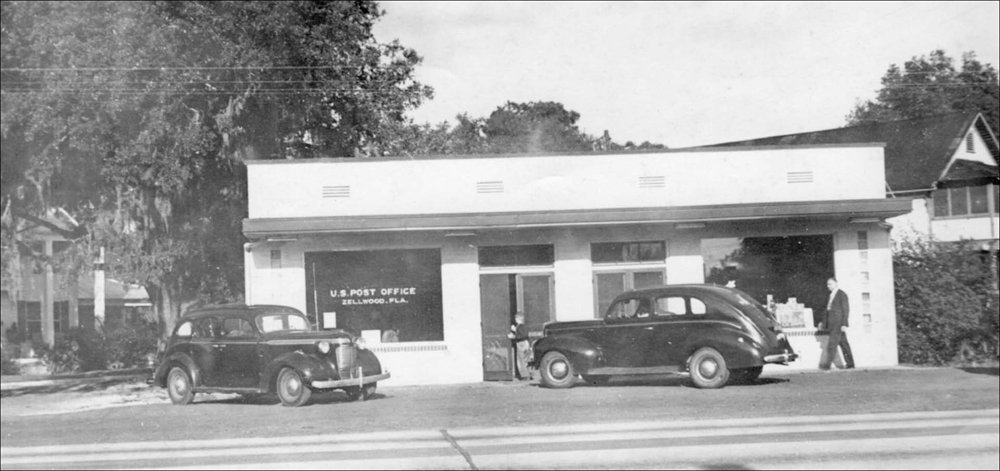
The Zellwood Post Office and Stewart’s Sundries drugstore, owned by Leonard F. Stewart Jr., were constructed in 1946, before Highway 441 was widened to four lanes. Stewart was postmaster and managed the store with the help of his sister, Helen “Babe” Uptagraft. Through the years, he employed many Zellwood residents in the drugstore, including teenagers as young as 14. For some, the 50¢ hourly wage helped them purchase school clothes. Stewart, a friend to everyone, was devoted to his work and to the care of his mother, Annie. (Courtesy of Betty Uptagraft.)
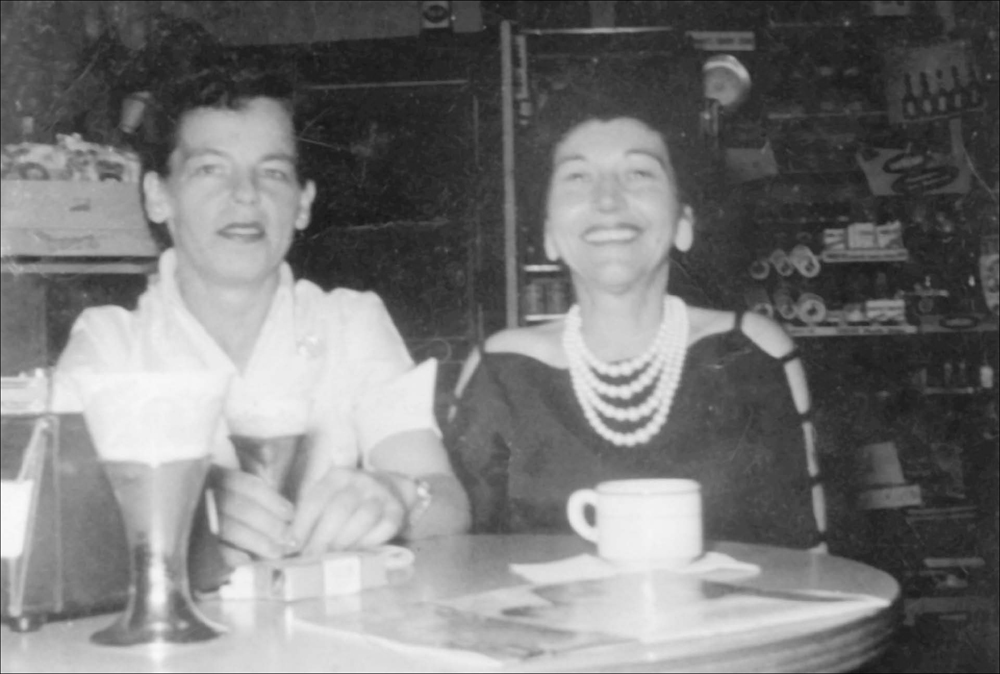
Lois Miller Brown (left) and “Babe” Uptagraft (right) are pictured at Stewart’s Sundries. The drugstore sold fountain drinks, coffee, soup, sandwiches, and Borden’s Elsie ice cream for cones, sundaes, sodas, and milkshakes. People came to check the mail at the post office next door, then visited Stewart’s. Customers included locals and out-of-towners. The Rock-Ola jukebox was a highlight for teenagers. Customers could also purchase various over-the-counter medicines and remedies, as well as perfumes and magazines. (Courtesy of Deloris Lynch.)
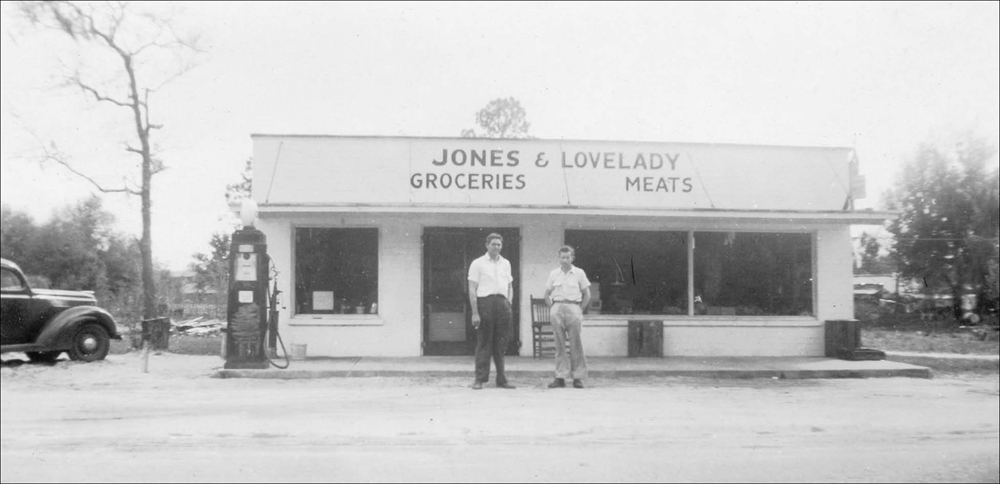
In 1930, Wallace Osborn sold the business that his brother Lewis once operated—Osborn General Merchandise—to William S. Jones. Jones and his wife, Florence, raised Evelyn Brawn after her father died. A few years later, the Joneses invited Brawn and her husband, W.D. Lovelady (at left in this image), to join the business. In 1946, the Jones & Lovelady store moved into this concrete building, which the store’s owners had constructed at 5710 Jones Avenue. (WL.)
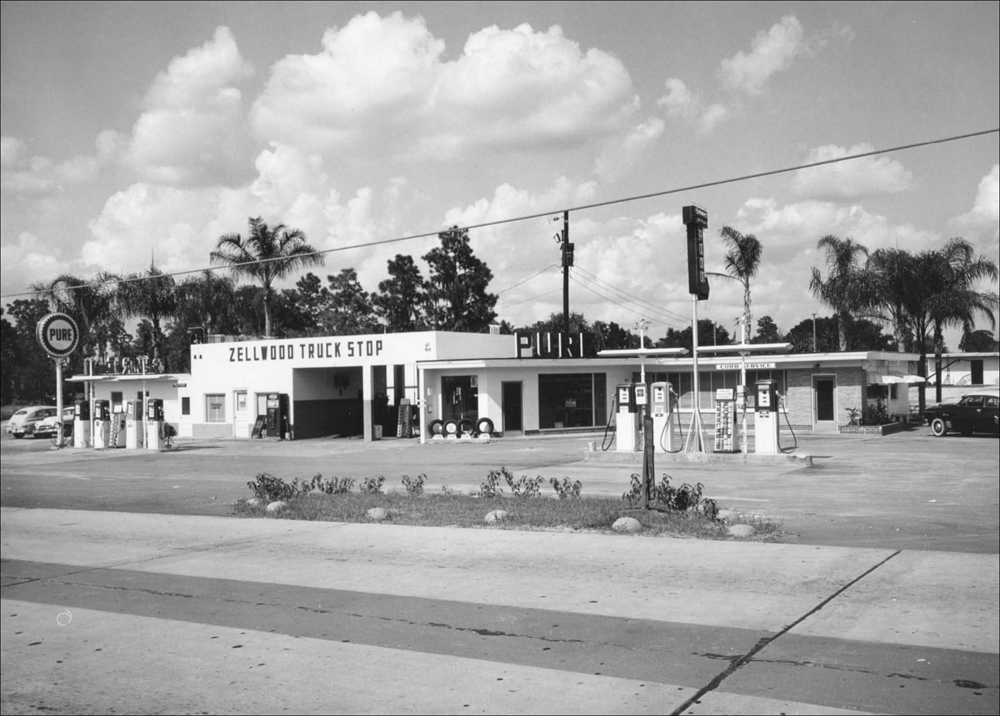
At 2651 North Orange Blossom Trail, on the northeast corner of Winifred Avenue and Highway 441, Ellis and Nadine Starbird built the Zellwood Truck Stop around 1956. “It was a full service truck stop with a nice lounge, bunks, showers, and Ellis’s office,” recalled Nadine. The Starbirds sold the truck stop in 1970. In 2014, Zellwood Country Kitchen was in this location and was typically packed with people enjoying breakfast and lunch. (Courtesy of Nadine Starbird.)
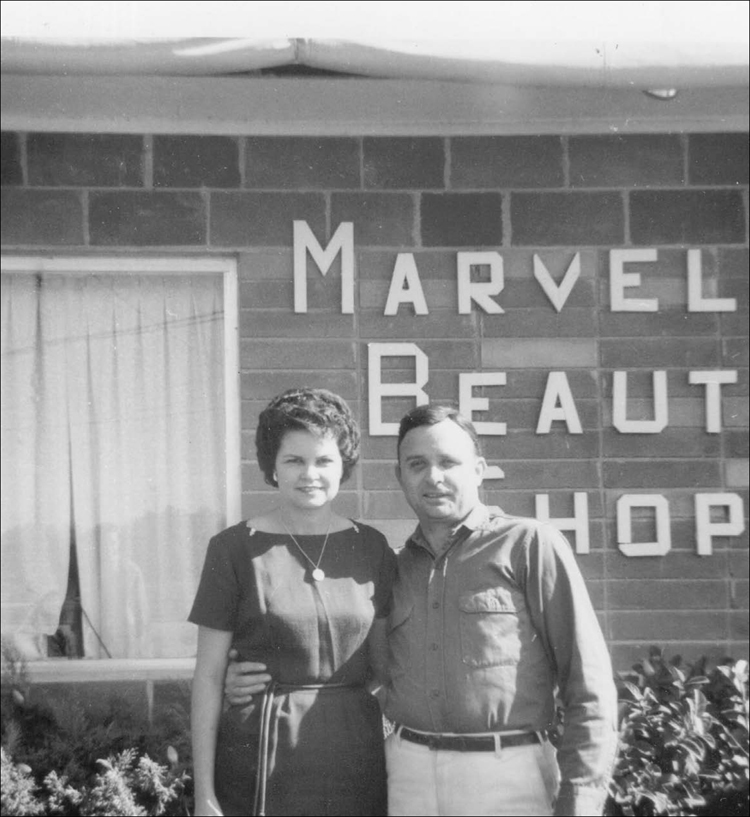
Marvel Walker (pictured at left with her husband, Walter) opened her first beauty shop in 1958 in her home beside the Zellwood Baptist Church. In 1960, the salon moved into a new building constructed on Highway 441 beside the Bay gas station. Many Zellwood residents were thrilled to have a beauty shop where women could go for a stylish haircut, permanent wave, or a new hair color. With mother’s permission, teenagers could get blonde hair—just like the movie stars. (Courtesy of Marvel Walker.)
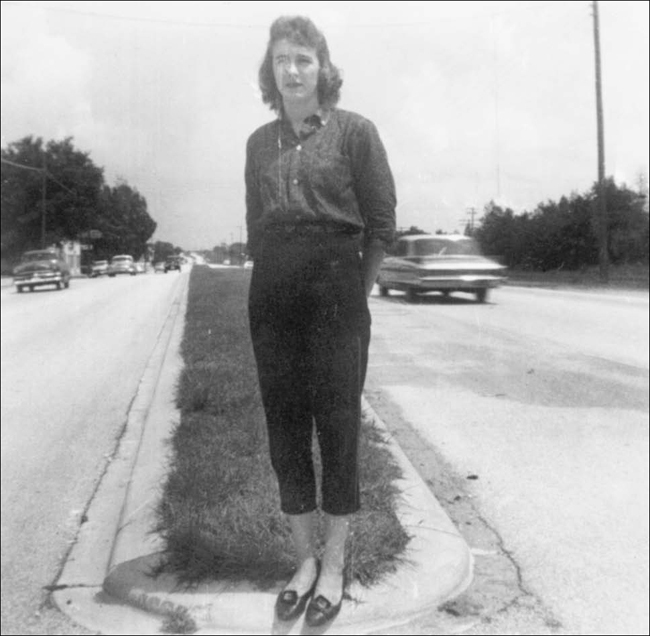
The road between Orlando and Zellwood was reportedly once a pine-needle path. The Florida Department of Transportation’s earliest record for the main highway through Zellwood is dated 1920–1922. Though it was originally part of State Road 2, this highway was later renumbered State Road 500, and by 1936, it had been designated as Highway 441. In the 1940s, Highway 441 became a two-lane road. Around 1957, Zellwood storefronts lost property to the new four-lane highway, and stores also lost their curbside parking spaces. In this picture from the early 1960s, Inell Miller stands on the median of Highway 441. (Courtesy of Betty Smith Allen.)


























